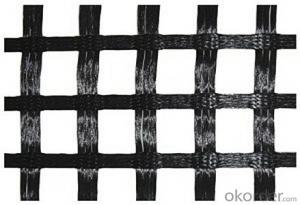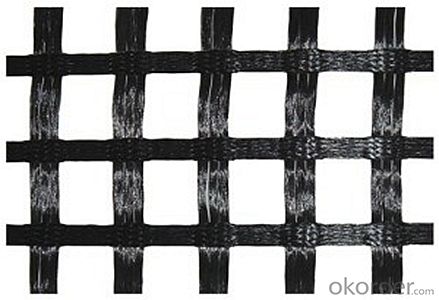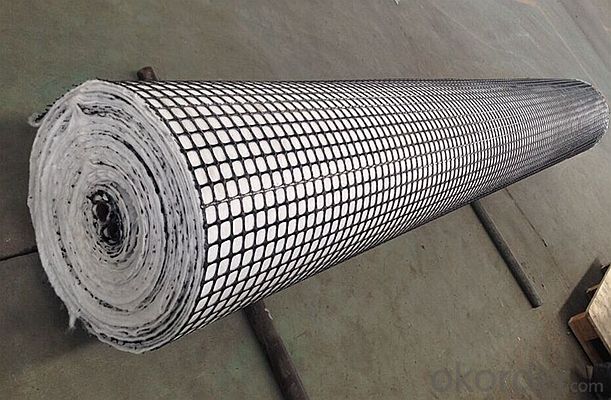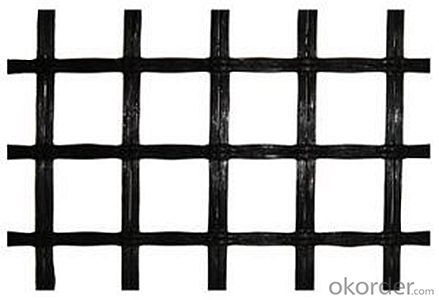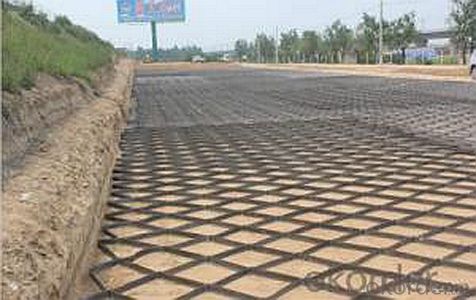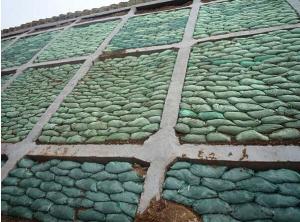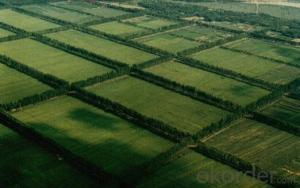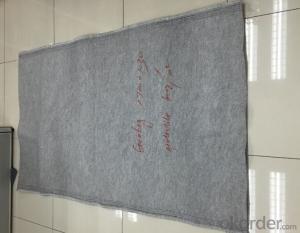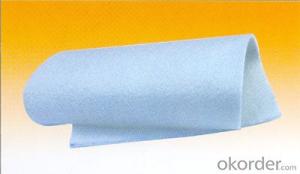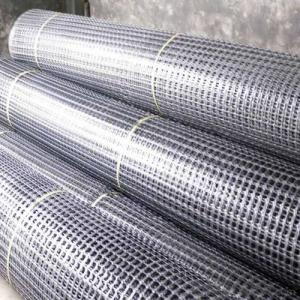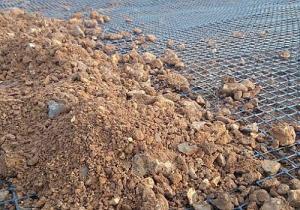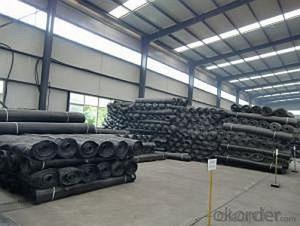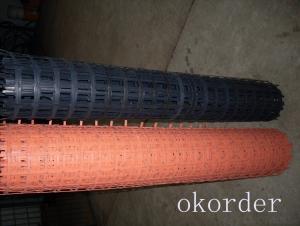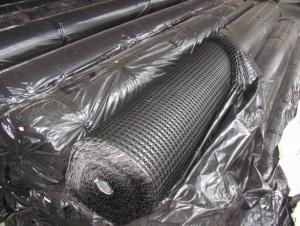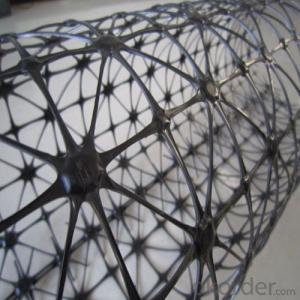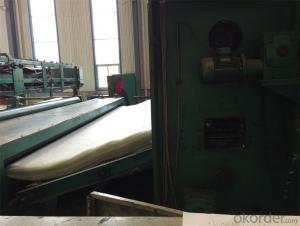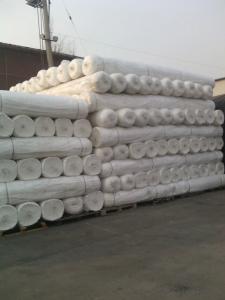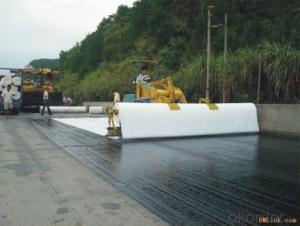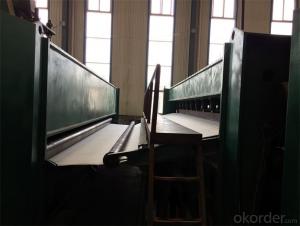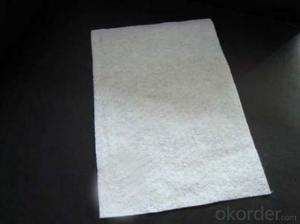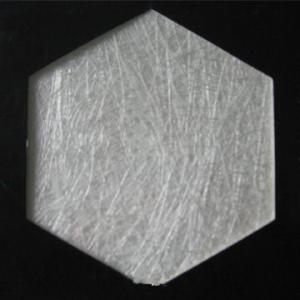High Tensile Strength Filter Fabric Geotextile with Low Elongation and Good Toughness Fiberglass Geogrid
- Loading Port:
- China main port
- Payment Terms:
- TT OR LC
- Min Order Qty:
- 1000 m²
- Supply Capability:
- 1000000 m²/month
OKorder Service Pledge
OKorder Financial Service
You Might Also Like
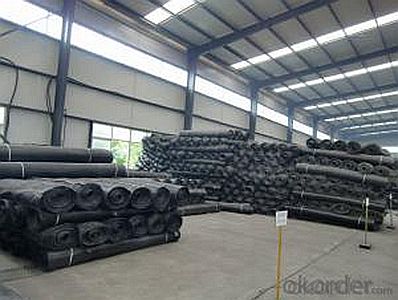
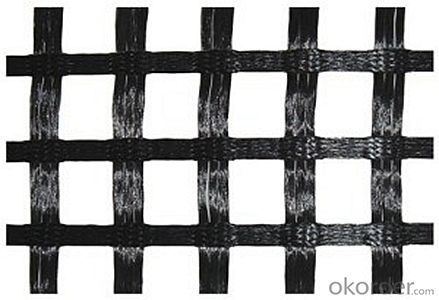
Fiberglass Geogrid
Specifications
Light weight, high tensile strength, high modulus, low elongation and good toughness.
Fiberglass Geogrid Introduction
Fiberglass geogrid is a kind of planar mesh material using alkali-free fiberglass yarn as base body and then coated with high quality modified asphalt. It is warp knitted with oriental structure which gives full play of yarn strength and improves its mechanical property to make the product high tensile, tearing and creep-resistant. Moreover, the composite property of coating with asphalt makes full protection of the fiberglass matrix and greatly improves its wear and shear resistance. All the advantageous functions make the product have a good performance in pavement strengthening, track cracking and solving difficulties of strengthening the bituminous pavement.
Packaging & Shipping
Packing: PLASTIC FILM INSIDE, AND WOVEN BAG OUTSIDE
Shipping: About 15 days after receipt the deposit
Our Service
Quality assurance
1.On a regular basis or as per your request,we entrust national testing agencies to conduct quality inspections
2. Strictly in accordance with the ISO9001-2008 international quality system standard,we monitor and manage the whole process throughout production,quality testing,and measurement to ensure product quality
3. For quality-related construction delay or substandard construction(except for damage or losses due to customer’s responsibility or irresistible natural disasters),we have refunding,replacement,and repair services.We will respond to customers’ feedbacks on quality issues within 24 hours.
Q: What kind of payments does jenor support?
A: T/T, L/C, Cash are accepted.
Q: Do you charge for the samples?
A: Accordeing to our company policy, the samples are free, we only charge the freight fee. And we will return the freight fee during the next order.
Q: Can you produce according to customers' design?
A: Sure, we are professional manufacturer, OEM and ODM are both welcome.
Q: Do you have other products?
A: Yes, please check the pictures:
- Q: How do geotextiles help with erosion control in river channels?
- Geotextiles help with erosion control in river channels by providing a physical barrier that stabilizes the soil and prevents it from being washed away by flowing water. They also promote vegetation growth by allowing water to permeate while filtering out sediment, ultimately protecting the riverbanks from erosion.
- Q: Seepage geotextile and impervious geomembrane
- It is generally believed that the individual geotextile does not have the anti-seepage effect, the main assessment index is the permeability coefficient, the general geotextile coefficient is higher than the ordinary soil, about 0.01-0.001 look, but the geotextile and rubber, Asphalt, plastic combination will form a water-impermeable composite, anti-seepage effect increased by 10 times, and asphalt, rubber combined into a waterproofing membrane such as sbs, etc., and plastic is generally polyethylene, polyvinyl chloride, eva (standard name is Geomembrane) is a combination of impermeable geomembrane or composite geomembrane, because the composite white geotextile outside the protective effect, so the project is also called impermeable geotextile. Therefore, the two are essentially not much difference, but the argument is different. Waterproof board is also called geomembrane, customary to> 0.8mm thick geomembrane called waterproof board, & lt; 0.8mm called geomembrane, it is based on high molecular polymer as raw material made of impermeable material , Divided into homogeneous waterproof board and composite waterproof board
- Q: How do geotextiles contribute to soil remediation?
- Geotextiles contribute to soil remediation by providing a physical barrier that separates contaminated soil from clean soil, preventing the spread of pollutants. They also promote drainage, filtration, and stabilization of the soil, enhancing the effectiveness of remediation techniques such as soil washing, bioremediation, and phytoremediation.
- Q: Drainage board geotextile or gravel plus geotextile which water treatment effect is good
- Sure that the drainage board plus geotextile drainage effect is good, but the cost than the gravel Gao Hua Zhi geotechnical materials manufacturers to answer
- Q: Designers give blind ditch length of 540m, geotextile for 2835m2 more
- Lovel new materials geotextile raw materials: geotextile raw materials used not only to consider its use in the environment required physical and chemical properties, but also pay attention to product costs.
- Q: Geotextile manufacturers are what industry
- Petrochemical! Raw materials are all extracted from the oil out of the glial particles!
- Q: How do geotextiles affect soil properties?
- Geotextiles can have various effects on soil properties. They can enhance soil stability and prevent erosion by acting as a barrier against soil movement and water flow. Geotextiles can also improve soil filtration and drainage by allowing water to pass through while retaining soil particles. Additionally, they can provide reinforcement to the soil, increasing its load-bearing capacity and reducing settlement. Overall, geotextiles can significantly influence soil properties, improving its performance and durability in various geotechnical applications.
- Q: Can geotextiles be used in shoreline protection projects?
- Yes, geotextiles can be used in shoreline protection projects. Geotextiles are often utilized in coastal erosion control and shoreline stabilization efforts as they can help to prevent soil erosion, control sediment movement, and enhance the stability of shoreline structures.
- Q: 3923.1 why not apply to geotextiles
- Geotextile price, geomembrane price, composite geomembrane price can be found tgcl1123 to see
- Q: Can geotextiles be used in erosion control on steep slopes?
- Yes, geotextiles can be used in erosion control on steep slopes. Geotextiles are specially designed fabrics that are used to stabilize soil and prevent erosion. They can be installed on steep slopes to reinforce the soil, reduce water flow, and promote vegetation growth, all of which help to prevent erosion and maintain slope stability.
Send your message to us
High Tensile Strength Filter Fabric Geotextile with Low Elongation and Good Toughness Fiberglass Geogrid
- Loading Port:
- China main port
- Payment Terms:
- TT OR LC
- Min Order Qty:
- 1000 m²
- Supply Capability:
- 1000000 m²/month
OKorder Service Pledge
OKorder Financial Service
Similar products
Hot products
Hot Searches
Related keywords
